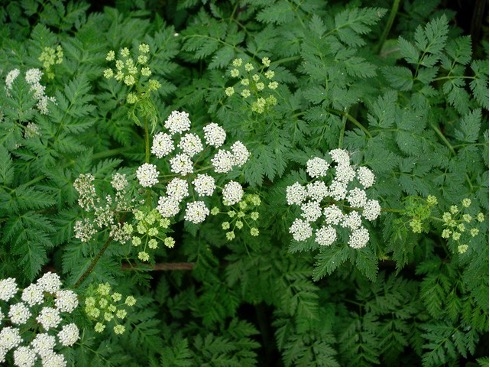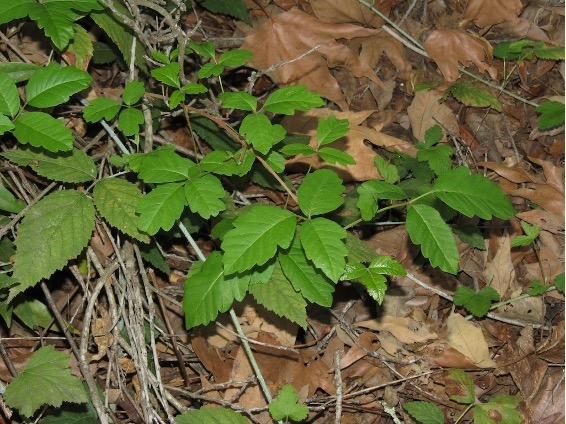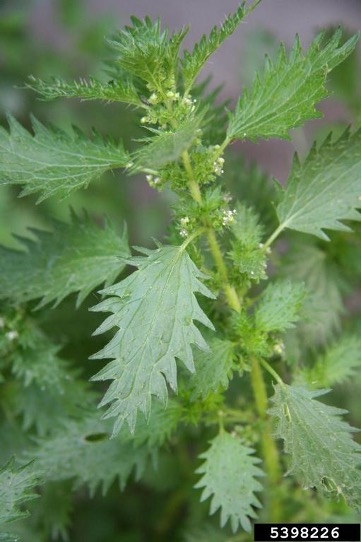Plentiful rainfall in California this spring created an ideal environment for many plants to thrive, including wildflowers, trees, and shrubs that desperately needed the water. However, other potentially harmful species also benefited from the unusually wet weather. Of particular concern are poisonous plants which are growing abundantly in parks and wildlands this year. These plants pose health risks to people, especially children, and pets. Being able to identify poisonous plants and understand available control options is critical for the safety of people who encounter them. While several poisonous plants grow in California, a few of the more common are detailed below along with information on how best to remove or manage them.
Poison Hemlock
Poison hemlock (Conium maculatum) is an invasive weed that thrives in disturbed areas but it can also invade native plant communities. It is commonly found in meadows, pastures, and fields, and may spread quickly after the rainy season. All parts of the plant are toxic to humans and animals when ingested. Touching poison hemlock may cause contact dermatitis for some people.

Poison hemlock can easily be mistaken for its relatives in the family Apiaceae, like carrot, parsley, parsnip, or celery, especially when plants are young. Leaves are triangular shaped, deeply lobed, and have opposite branching (Figure 1). Unlike invasive wild carrot (Daucus carota), poison hemlock lacks hairs on its leaves and stems. Poison hemlock has white, umbrella-shaped flowers, similar to those of native cow parsnip (Heracleum maximum). However, cow parsnip has much wider leaves that are arranged in threes and can measure up to 16 inches wide. You can also distinguish poison hemlock from similar plants by checking for purple streaks or spots along its hollow stems. Mature plants can reach almost 10 feet tall.
Poison hemlock is best controlled when young, before it sets seed. It releases seeds over several months, and copious amounts of seed can build up in the soil. Small infestations of poison hemlock can be managed by hand removal while wearing gloves or hoeing the area. The taproot must also be removed to prevent regrowth. Repeatedly mowing poison hemlock can deplete its energy and prevent seed production. Be sure to clean mower blades to avoid moving seeds to new areas. Herbicides containing 2,4-D, triclopyr, or imazapyr work best on seedlings. Glyphosate, chlorsulfuron, and metsulfuron are effective on larger, rapidly growing plants. Repeated herbicide applications may be required for several years until the seedbank has been depleted. Never burn poison hemlock as this can release its toxins into the air.
Poison Oak
Poison oak (Toxicodendron diversilobum) is a deciduous native plant that is widespread through California's coastlands, woodlands, rangelands, riparian areas, and urban parks and gardens. Poison oak, like its eastern relative poison ivy, contains an oil called urushiol that can cause contact dermatitis and itchy, weeping rashes on the skin of people who are sensitive to urushiol. The allergy-causing oils can persist on tools, clothing, and other objects for months or even years.

The old adage “leaves of three, let it be” often holds true for poison oak, but not always. Plants normally consist of 3 leaflets, but may sometimes contain 5, 7, or 9. Leaves are slightly lobed and occur alternately along the stem (Figure 2). They can vary in color and texture from glossy to dull, and thin to leathery. In open, sunny areas poison oak can grow to be a dense shrub. In more shaded areas it grows as a climbing vine. It can easily spread to cover large areas via seeds and rhizomes.
Poison oak can be removed through hand pulling and digging (including roots) with a shovel; wear protective clothing and gloves, and promptly wash or discard them afterwards. Removed plants should be carefully disposed of since the oils remain hazardous even after the plants have dried. Never burn or mow poison oak as it will release its oils into the air, posing an inhalation risk. Herbicides that contain at least 41% glyphosate or 61% triclopyr ester have been shown to provide effective control. Dicamba and imazapyr can also be used. Foliar applications should be made in the late spring or late summer, depending on the chemical used. Cut-stump treatments can be performed in the spring or fall.
Burning and Stinging Nettles
Unlike poison oak and poison hemlock which may only affect some people, burning and stinging nettles (Table 1) cause burning rashes to anyone who touches them. The rashes are caused by a toxin in the prickly hairs on the leaves and stems. Contact with burning and stinging nettles can cause blisters and red patches. Itching, burning, and tingling sensations may persist on the affected skin for several hours.
| Burning nettle | Stinging nettle |
| Found in disturbed sites, roadsides, orchards, and gardens; common along the coast | Found in unmanaged areas, riverbanks, moist wildlands, and roadsides |
| Summer annual; blooms January to April | Perennial; blooms March to September |
| Spreads by seed | Spreads by seed and rhizomes |
| 5 inches to 2 feet tall when mature | 3½ to 10 feet tall when mature |
| Opposite leaves with toothed margins; ½ inch to 2 inches long (Figure 3) | Opposite leaves with toothed margins; 2½ to 5 inches long |

Burning and stinging nettles can be nuisance plants as well as health hazards. However, they are not considered invasive or noxious weeds. In fact, stinging nettle is native to California so control should only be performed if plants are causing economic or health concerns. Hand pulling while wearing gloves can be effective, but the underground stems (rhizomes) of stinging nettle must also be removed. Mowing close to the ground can prevent seed development and spread, but if done too early in the season the nettles will regrow rapidly from the rhizomes. The active ingredients 2,4-D, aminopyralid, dicamba, glyphosate, and triclopyr provide excellent control for both stinging and burning nettles.
To learn more about controlling these toxic weeds in landscapes and natural areas, see the Weeds page on the UC IPM website at ipm.ucanr.edu/PMG/menu.weeds.html or the Weed Research Information Center wric.ucdavis.edu. These and other weeds are described in the book Weed Control in Natural Areas in the Western United States, available from the UC ANR catalog anrcatalog.ucanr.edu.